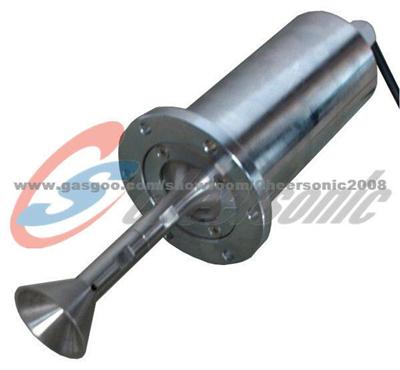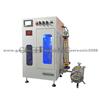Ultrasonic Atomizer
- Application: Acura
- Market Type:After Market
- Price: USD USD 500~5000 / Set
- Payment Terms: L/C, T/T, Western Union Mone
- Samples: Free
- Minimum Order: 1Set/Sets
Quick Details
-
Output Power:
30-500w
- Samples:
Free
- Delivery Time:
One Working Day
- Packing:
Paper Carton Inside And Wooden Box Outside
- Delivery Port:
NINGBO SHANGHAI
- Max. Production Capacity:
1000 Set/Sets / Month
- OE Experience:
No
Product Name:Ultrasonic Atomizer
Ultrasonic Atomizer
Application
Acura
Product Description:
Unlike conventional atomizing nozzles that rely on pressure and high-velocity motion to shear a fluid into small drops, the ultrasonic atomizer uses only ultrasonic vibrationalenergy to generate a gentle, low-velocity spray(). Overspray is practically eliminated, resulting in substantial material savings and reduction in airborn pollution. The liquid can be dispensed to the atomizing probe (nozzle) by either gravity or a small low-pressure metering pump, and atomized continuously or intermittently. The rate at which the liquid is atomized depends, within limits, solely on the volume that is being delivered onto the atomizing surface, and the frequency.
Typically, the higher the frequency, the lower the processing capability. The amount of material atomized can be as little as 2 μl/sec. Because the droplets typically drift downward at low velocity under the influence of gravity, the probe should be mounted with the tip facing downward, and air turbulence kept to a minimum to mitigate spray pattern distortion. A wide variety of coatings, chemicals, lubricants, and particulate suspensions can readily be atomized.
However, factors such as viscosity, miscibility, and solid content deserve consideration. For optimum atomization, the viscosity should be under 100 cps and the solid concentration kept below 30%. Although lower frequencies are capable of atomizing higher viscosity liquids, because the atomization process depends on setting a liquid film into motion, typically the higher the viscosity the lower the flow rate, and the more difficult the application. The atomization of liquids containing long-chained polymer molecules is problematic, even in diluted form, due to the highly cohesive nature of the material
In many cases, mixtures with particulates can be atomized, because the solids are simply carried along in the drops. The low transport velocity of the liquid through the probe permits even abrasive slurries to be processed with negligible erosion of the passageway. Compared with conventional pressurized nozzles, the feed channel running through the probe and exit orifice are relatively large, and practically uncloggable. Drop size is primarily a function of frequency, and the higher the frequency, the smaller the drop diameter. With water, the median drop size at 20 kHz is 90 microns, and 50 microns at 40 kHz.
- Ford Manufacturing Equipment
- Buick Manufacturing Equipment
- Dodge Manufacturing Equipment
- Toyota Manufacturing Equipment
- Honda Manufacturing Equipment
- Chrysler Manufacturing Equipment
- Mitsubishi Manufacturing Equipment
- Audi Manufacturing Equipment
- Citroen Manufacturing Equipment
- GMC Manufacturing Equipment
- Cadillac Manufacturing Equipment
- Hyundai Manufacturing Equipment
Supplier Details
You May Like:
-
Automatic Ultrasonic Liquid Processer Ultrasonic E ...
Application: A
-
Inline Ultrasonic Liquid Processer Series Ultrason ...
Application: A
-
Ultrasonic Fabric Cutting Machine Ultrasonic Texti ...
Application: A
-
High-quality Press Machine with Competitive Prices
Application: Tyre Manufacture ...
OEM No: 8477900 ...
-
Horse Float Standard Angle Load Horse Trailer
Application: Horse trailer, h ...
-
Manufacturing Bearings
Application: many
OEM No: Avaible
-
Bonding Machine(AW-MAC-001)
Application: Bonding Machine
OEM No: AW-MAC- ...
Related Product Tags:
aluminium foil , automatic line machine , bandsaw blade , battery thermal protector , series battery thermal protector , tube bending machine , bending machine , blasting machine , shotblasting machine , blow molding machine , blow moulding machine , briquetting press , bucket elevator , camshaft grinding machine , CBN INSERT , chain block , chain hoist , cleaning machinePlease send us Your Search Requirement, or you can Post a Buying Lead,
suppliers may contact you actively.









